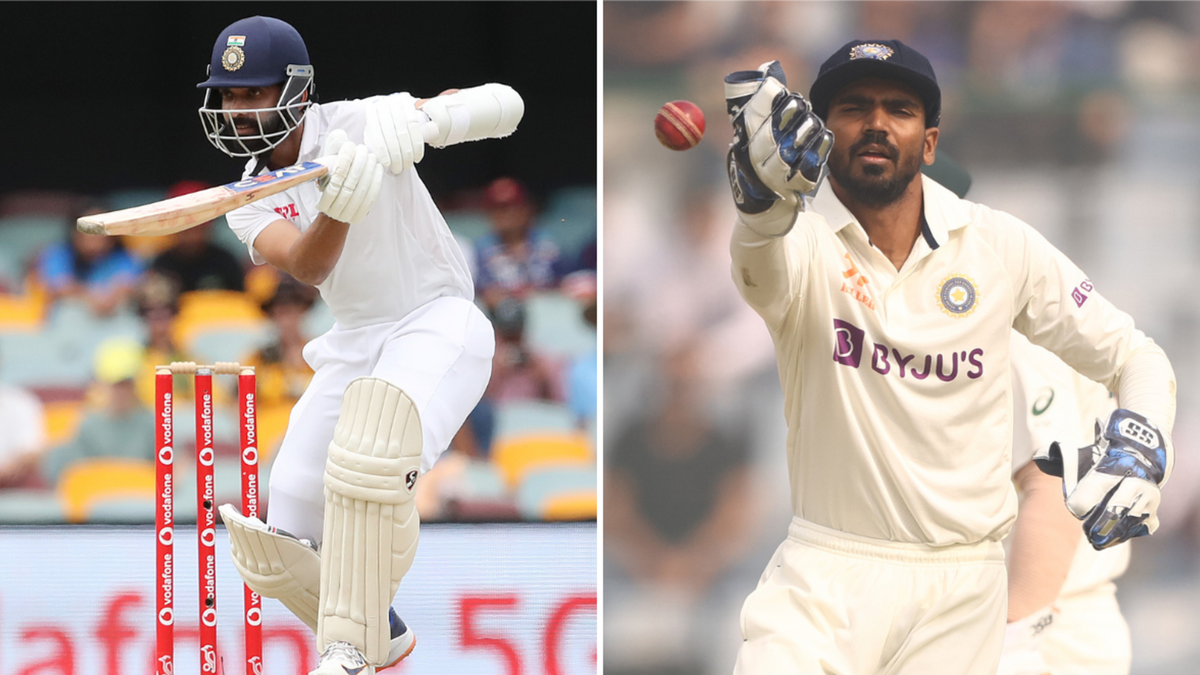
India announced their 15-member squad for the World Test Championship (WTC) 2021-23 final this morning (April 25), which will be played at The Oval from June 7. Here are the key takeaways.
With a win percentage of 58.8, India finished second in the group stage of the competition to qualify for the final against table toppers Australia (66.67). It will be a gruelling ordeal, as the Test match will begin a mere ten days after the IPL final. Australia also have a jam-packed schedule, their Ashes defence starts five days after the final is due to finish.
India’s squad for WTC 2021-23 final: Rohit Sharma (c), KS Bharat (wk), Ajinkya Rahane, Shubman Gill, Cheteshwar Pujara, Virat Kohli, KL Rahul, R Ashwin, Ravindra Jadeja, Axar Patel, Shardul Thakur, Mohammed Shami, Mohammed Siraj, Umesh Yadav, Jaydev Unadkat.
Five years later…
The last time India played an overseas Test match without both Jasprit Bumrah and Rishabh Pant was also in London – at Lord’s in 2018. They will be without two of their most important Test cricketers yet again.
Ajinkya Rahane is back
Rahane last played for India on their 2021/22 tour of South Africa in the aftermath of a torrid run in Test cricket. Since the global lockdown, he had made 819 runs at 24.08 – the worst average among batters with a minimum of 800 runs.
Since he was left out, Rahane has made 1,069 runs at 56.26 in first-class cricket, playing entirely in India. That number is boosted by a 207 not out against Duleep Trophy debutants North East Zone, who were knocked out after that match.
Take that one performance out, and his average in that time drops to 45.37, probably below par by Indian first-class cricket standards.
Of course, he has not only been outstanding in this edition of the IPL: he has been absurdly good. His 209 runs have come at a strike rate of 199 – the best for anyone to have faced 10 balls (no typo there) this season.
Just like his first-class runs, these runs, too, came in the familiarity of Indian conditions. Whether that is enough for a Test recall needs to be seen.
But then, we are talking about a person who made a magnificent hundred the last time India played Australia away from home…
What was the SKY experiment about?
With Shreyas Iyer injured, India included Suryakumar Yadav in the XI for the Test series at home against Australia. He made eight runs, and that was that. A hat-trick of golden ducks in ODIs later, he is – not unpredictably – back among runs at the IPL.
Yadav had been drafted into the ODI side, presumably based on his superlative record in Twenty20 Internationals. 23 matches later, his record stands at 433 runs at 24.05, and that lone Test match.
If India needed a replacement for Iyer then, it could have been Rahane, who was as eligible now as he was back then (he has not played first-class cricket since Surya’s only Test match).
The only explanation to this can be Rahane’s superlative IPL form. One can only hope that another across-format selectorial experimentation does not go wrong for India.
Eight bowlers!
India have picked six batters, the wicketkeeper Bharat, and eight bowlers, including three spinners – a slightly unconventional squad combination.
Yet, it makes sense. India are likely to play five batters and they have included backups for them, both at the top and at the middle. If everyone is fit, one of Gill, Rahul, and Rahane will bat at five. If an opener or a middle order bat misses out, there are options to fill in for them.
The last time India played a Test match at The Oval, they went in with four fast bowlers and Jadeja, who batted at five in each innings. England themselves picked only Moeen Ali as a spinner, who bowled 26 overs – all of them in the second innings.
If India play four fast bowlers, they will have an extra in reserve. If India play two spinners (Ashwin may get in against an Australian side studded with left-handers), they have Axar in the reserves – and all three spinners can bat, meaning they have the option to go in with six frontline bowlers.
Curiously, India do not have a second wicketkeeper. Keep an eye on Rahul in the net sessions, despite him starting only one first-class match as deputed gloveman.
Sarfaraz Khan waits
Despite a first-class average of 79.65 – the highest in history among non-Bradmans – Sarfaraz is yet to play a Test match, and will not this time, either. Since the start of the 2019/20 season, that number shoots up to 106.07.
It is not very clear where he is going wrong, but these numbers were not enough to impress the selectors for the Australia series, and are not enough now, even in Iyer’s absence.
Perhaps the next WTC cycle will bear better news for him. For now, he is behind Iyer, Surya, and Rahane – and perhaps a few others – in the pecking order.








